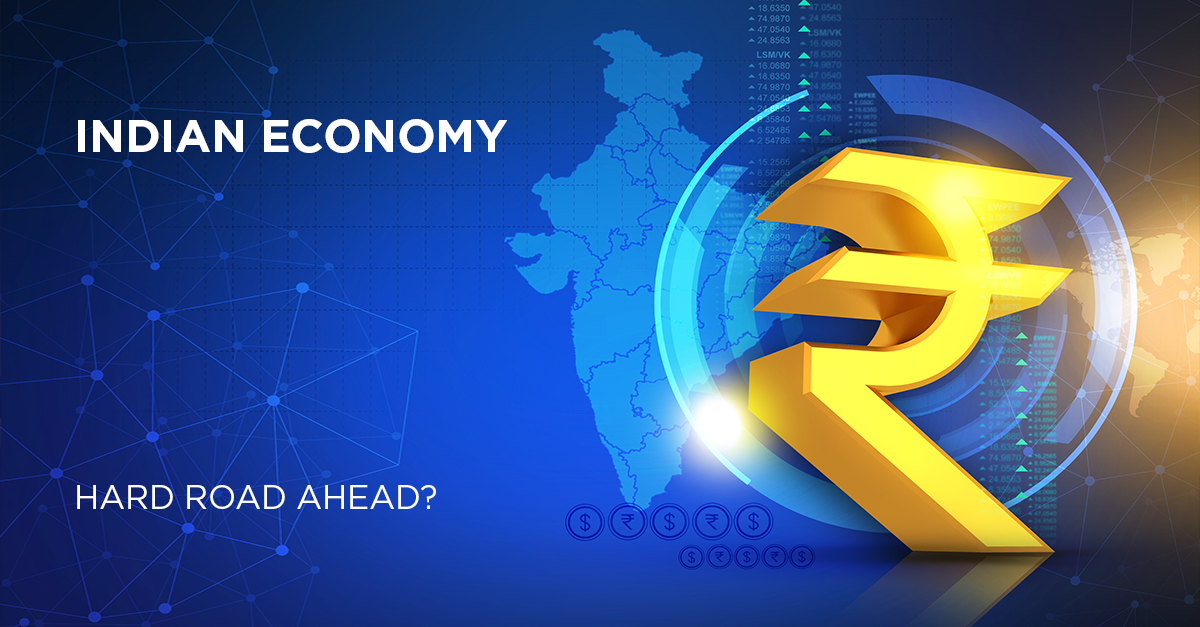Earlier this year the Indian Prime Minister Narendra Modi declared that he wanted India to be a USD5-trillion economy by 2024, when he faces re-election. Currently, India is a $2.8-trillion economy and to reach the $5-trillion mark by 2024, the economy requires a growth of more than 12 per cent a year. Apart from the huge challenge of creating this highly optimistic rate of growth in the economy, the exchange rate may spoil the arithmetic here as well, if the rupee depreciates further against the dollar. The average annual depreciation of the rupee against the dollar in the last five years was 2.9 per cent. Although this is slightly higher than usual due to a large depreciation observed over the brief period of a few weeks, in 2018-19.
The rupee exchange rate is influenced by several factors, such as the fundamentals of the domestic economy, global geopolitical risks, crude oil prices, capital flows to emerging market economies (EMEs), anti-globalization policies of developed countries, etc. One may therefore assume that the rupee may depreciate at least by 10 per cent in next five years, in which case India may reach USD 4.4 trillion by 2023-24. So are we seeing a hard road ahead?
A look at the recent past
The “challenging, but achievable target”, as Modi termed it, needs to come from a pan-India growth. In his speech to India’s chief ministers, Modi said, ““Every department of the Union government and every district of each state has a role to play in making India a $5-trillion economy….Each state must aim to at least double its economy, if the country is to achieve the target by 2024.”
During its first term, the Modi government carried out some transformational reforms, although their implementation is still being debated. Corporate India has supported the GST and the bankruptcy code, while business houses have supported the mechanisms for the Central Bank to control inflation. There has also been a certain level of transparency in government decision-making (as a result of curbs on corruption at the Centre, if not in the states). The implementation of the Insolvency and Bankruptcy Code (IBC) of 2016, for example, has ensured that promoters who default cannot take the system for granted any longer. Also what has been interesting to see is that many foreign companies are setting up their facilities in India on account of various government initiatives like “Make in India” and “Digital India”.
The current profile of initiatives, challenges and opportunities
According to the International Monetary Fund, India’s GDP averaged around 7.5 per cent over the past five years. However this has slowed down to 6.8 per cent in 2018-19. So how is it possible to push the real GDP growth to 7.5 per cent and above, one may ask?
There is general agreement that the government has undertaken several structural reforms in last five years. Many of the big projects that are in the pipeline are likely to be completed in the next two-three years and this may improve productivity, contributing to a high GDP growth going forward.
Also, as India’s minister for external affairs, S Jaishankar said in an interview to World Economic Forum (WEF) President Borge Brende, India is in a unique position as a market economy. He said, “The extent of convergence we have with the US in terms of trade, investments and knowledge has given rise to many industries in India… We also have a strong bonding with African and Asian countries. There is new energy in reaching out.” This is true as recently we have seen that support for infrastructure funding for India has come from outside the country, including the UAE’s plan to invest $75 billion in infrastructure development across India. Infrastructure that has so far proved an impediment to India’s growth and unless it is addressed, the full potential of India’s long-term growth cannot be unlocked. According to a recent report by Standard and Poor, India will need another $4.5 trillion over the next 25 years to build infrastructure that matches its economy.
Brende recently also applauded India for its commitment to renewable energy and for playing a lead role in the Paris Climate Agreement negotiations. India has also gained global stature in space exploration after its recent lunar mission. But now it needs to undertake some groundbreaking structural reforms that mirror its growth ambitions and development priorities. Initiatives that have revamped India’s restrictive business regulations are already showing result. The country now ranks at 65th in the World Bank’s Ease of Doing Business rankings, which has helped boost investor confidence. The growth of start-ups and innovative enterprises across domains such as digital payments, online retail, education and software has increased the number of Indian unicorns every year as well.
My concerns and thoughts on what is needed next
I feel what India needs now are holistic structural reforms that are conducive to boosting the sustainability and resilience of its economy. As a country we must arm ourselves with the modern infrastructure, social services and connectivity that are hallmarks of developed economy. India must create jobs, and value the aspirations of its youth. I understand that achieving these targets in a country of 1.3 billion people, who speak dozens of different languages, is a huge challenge, but we have a huge opportunity here.
The government needs to revitalize real estate and construction, which can offer employment to a large pool of people and address the infrastructure gap. It’s crucial that measures to increase wage growth, and inject more liquidity into the system, are taken. Despite the bank mergers and shots of recapitalization, Indian banks are far from recovery. The various banking and financial institutions that are key lenders to Medium and Small Scale Enterprises (MSMEs) are still continue to face the pangs of the liquidity crunch. It would be almost impossible to tackle the slowdown without reviving small scale enterprises, which create a bulk of employment in the country. Many economists are of the opinion that bank mergers will not play a decisive role in economic revival and may in fact increase complications. Instead, the government should focus on measures that will enhance bank and NBFC lending and fix the liquidity crisis which has choked most MSMEs.
Another factor that might be an impediment to India reaching the 12 per cent growth rate in the next six years is the quality of education which has been an area suffering from neglect over several decades. The Indian Constitution allocates education as a responsibility for state governments and this introduces a multiplicity of stakeholders, across the country. It takes a generation to achieve the benefits of educational reforms, which includes improving the infrastructure of government schools, quality of teachers (who need to be paid well), and reorienting curriculum to create an innovative society. Most graduates in India are unemployable and this is a huge drag on GDP growth (lower employment means lower purchasing power and hence lower consumption of products and services). India will also take a few years to switch from slush money-driven consumption (real estate, automobiles and high end electronic goods) to a sustainable consumption.
So is the target achievable?
Low level of systematic corruption at the centre will eventually improve the efficiency of the system, resulting in better allocation of funds. Government consumption will remain paramount for some more time, as private investors need to rewire themselves to work in a slightly more transparent way. The five trillion mark is more of an aspirational number but if corruption remains at a muted level, India will achieve a very sustainable high growth in GDP in the near future.
So what about the target itself? Can it be done? To be perfectly honest, I’m neither optimistic nor pessimistic about this. I can see both the opportunity and the challenges. Even if 5 trillion is just a figure that gets India to 4.5 trillion or above, by 2024, it will have served its purpose. The more important issue is that there are several challenges to overcome to achieve this quantum leap and virtually all of them need to be overcome. The current administration has begun its new term energetically, but this must be sustained for 5 years. Care must also be taken that this energy is put into the right areas and points of focus.

